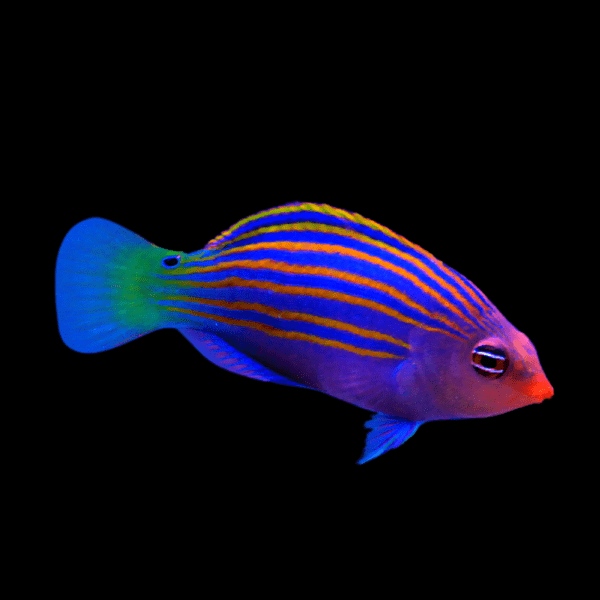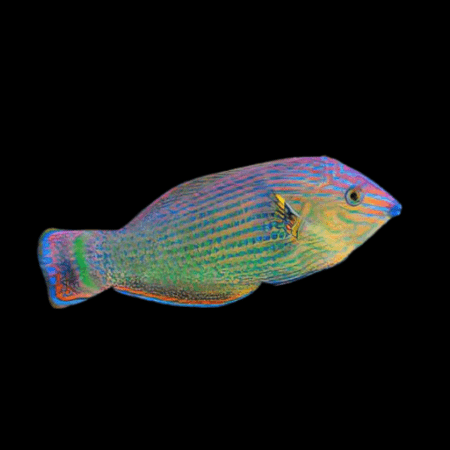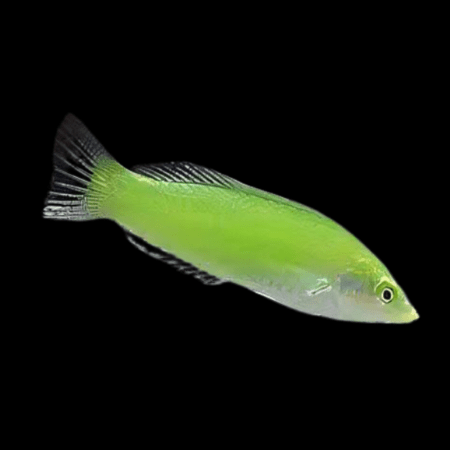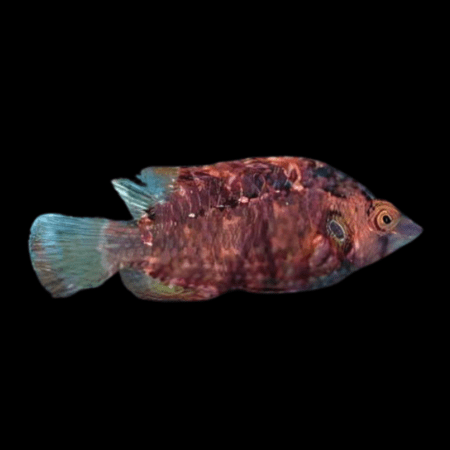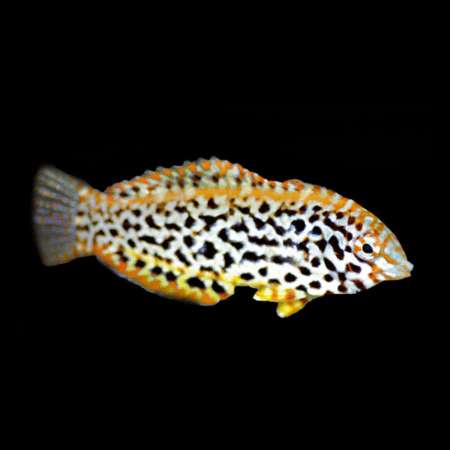Description
Pyjama Wrasse Pseudocheilinus Hexataenia
The Six Line Wrasse is a small, active fish known for its striking coloration, featuring six horizontal orange stripes across its blue body, a green tail fin with an eyespot, and other vibrant markings. It typically grows to a maximum size of around 4 inches, making it suitable for tanks as small as 30 gallons.
Origin
Originating from the Indo-Pacific and Fiji regions, the Six Line Wrasse is a natural reef dweller, requiring a tank environment that mimics its natural habitat with plenty of hiding spots, caves, and live rock.
Feeding Habits
This carnivorous fish primarily feeds on small invertebrates, such as snails, urchins, and flatworms. It is recommended to feed them a variety of high-quality marine meaty foods, including carnivorous pelleted diet and meaty treats such as mysis and brine shrimp.
Suitable Tank Mates
The Six Line Wrasse is typically reef safe and does not nip at corals. However, it can be aggressive towards other fish, particularly smaller, peaceful wrasses. It is best to limit the number of “cleaner” fish in the aquarium to prevent injury or death from aggression. Potential tank mates include larger, semi-aggressive wrasse species, such as the banana wrasse and dragon wrasse, but they will require considerably more space.
Aggression Level
This fish is considered semi-aggressive and should be added last to the tank to reduce aggression. It is recommended to have only one Six Line Wrasse per aquarium to limit aggression, unless breeding is intended.
Recommended Experience Level
The Six Line Wrasse is categorized as an easy-care fish, suitable for beginning aquarists. However, maintaining a saltwater aquarium still requires specialist knowledge.
Necessary Water Parameters
- pH: 8.1-8.4
- Temperature: 75 to 82°F (24 to 28°C)
- Minimum Tank Size: 30 gallons
- Salinity: 1.022-1.025
In conclusion, the Six Line Wrasse is a colorful, easy-to-keep, and reef-safe fish, making it an excellent choice for beginning reef keepers. However, careful consideration should be given to its tank mates and tank setup to ensure a harmonious aquarium environment.
